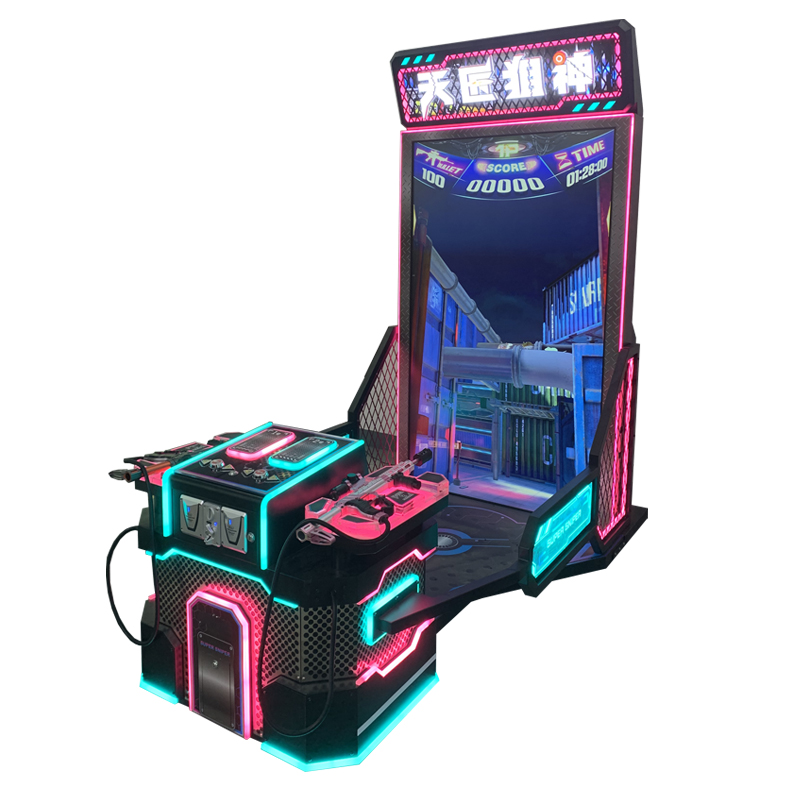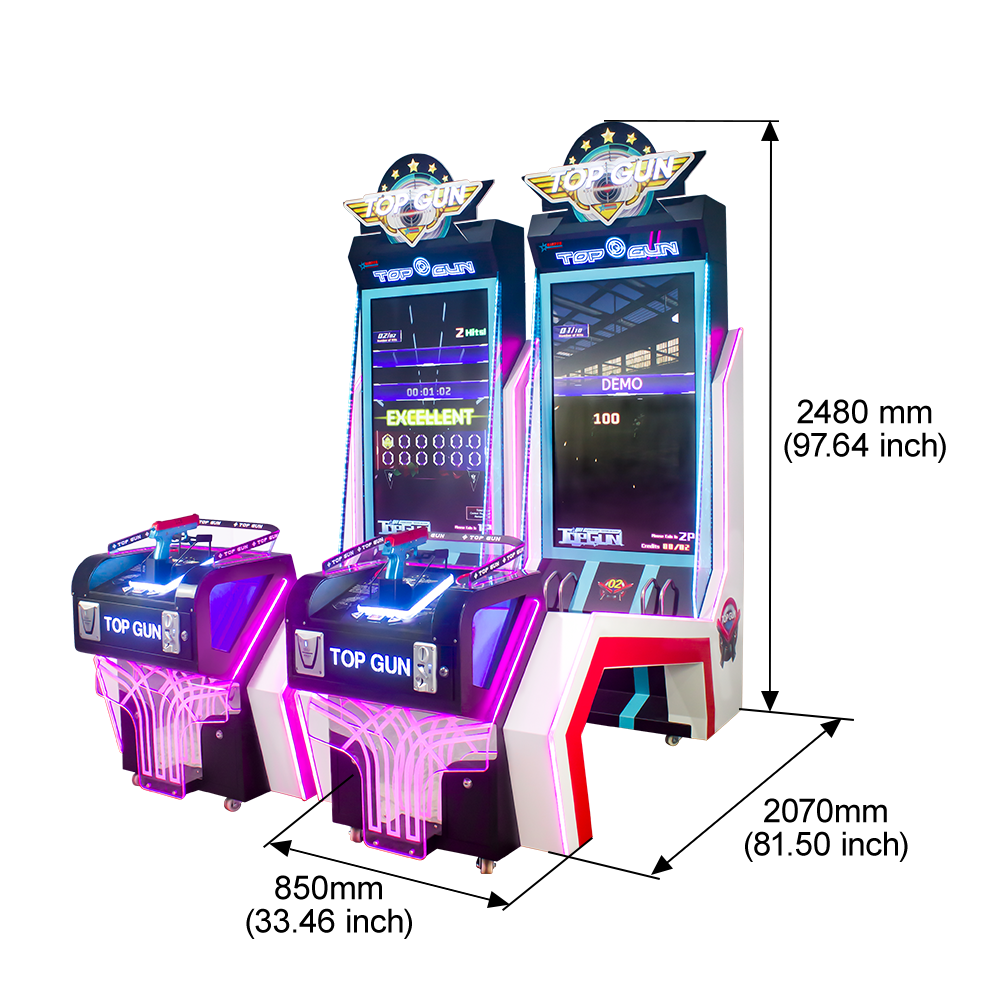Consider game complexity, audience preferences, space needs, maintenance ease, and integration with current setups to maximize engagement and revenue.
Table of Contents
ToggleGame Complexity
When selecting arcade games, understanding the complexity of the game mechanics is crucial. Simple games tend to attract casual players who prefer short, engaging play sessions without a steep learning curve. For example, a basic claw machine where players grab prizes offers straightforward entertainment. In contrast, complex games, such as those requiring strategic thinking or advanced controls, cater to more seasoned gamers. These often see higher engagement rates but may require more frequent player guidance.
Understanding Your Audience’s Skill Level
It’s important to match the game’s complexity with your audience’s skill level. For venues like family entertainment centers, games with simpler mechanics are ideal as they cater to all ages and skill levels. In gaming arcades that attract serious gamers, more complex games can be more popular. Analyzing customer feedback or conducting quick surveys can provide valuable insights into your audience’s preferences.
Balancing Engagement and Accessibility
A well-balanced game complexity can enhance player retention. For example, a racing game that offers multiple difficulty levels can appeal to both beginners and advanced players. Such games encourage players to improve their skills over time, thereby increasing their time spent at the machine.
Impact on Revenue
The complexity of a game can also affect its profitability. Generally, simpler games have quicker turnaround times, allowing more players per hour. This can be beneficial in high-traffic areas. Complex games, while potentially less frequented, can generate higher revenue per session as they often require longer play times and can encourage repeat visits.

Target Audiences
Selecting the right arcade game requires a deep understanding of the target audience. Different age groups and types of players often have distinct preferences and gaming skills.
Identify Your Main Player Demographics
First, analyze your location and foot traffic. Family-oriented venues like malls or holiday parks will benefit from games that appeal to children and families, like mini claw machines or interactive sports games. In contrast, arcades located near bars or adult entertainment areas might find more success with complex strategy games or high-stakes gambling simulations.
Age Appropriateness and Appeal
For younger audiences, games with colorful designs, simple controls, and recognizable characters tend to be more appealing. Meanwhile, teenagers and adults might be drawn to VR experiences and high-adrenaline racing games. Regularly reviewing customer feedback can provide insights into which games resonate best with your current visitors.
Cultural Relevance
Games that feature culturally relevant themes or popular media characters can attract more players. For instance, an arcade game tied to a popular movie release can draw significant interest from fans. Keeping up with cultural trends and integrating them into your game selection can significantly boost engagement.
Leverage Data to Fine-Tune Game Selection
Utilizing data analytics tools can help pinpoint which types of games perform best at your location. Tracking metrics such as average play time, frequency of play, and revenue per game can guide more informed decisions about which new games to introduce and which to phase out.
Space Requirements
Considering the space requirements is crucial when choosing arcade games, as the physical dimensions and layout significantly impact both the aesthetic appeal and functional aspects of an arcade.
Assessing Game Footprint
Start by measuring the actual space available in your arcade. Each game’s footprint, which includes not just the machine itself but also the necessary space around it for players to move comfortably, must be considered. For example, traditional arcade machines might require about 3×3 feet of space, but larger attractions, like racing simulators or VR setups, could need up to 10×10 feet or more.
Maximizing Game Layout
The arrangement of games can influence player flow and experience. Create a layout that allows for easy movement between games while avoiding crowded areas, which can deter players from stopping and engaging. Using a CAD program or similar planning tools can help visualize space usage effectively.
Consider Maintenance and Accessibility
Space isn’t just about player comfort; it’s also critical for maintenance access. Games need enough room around them for opening panels, replacing parts, and general upkeep without disrupting other games or requiring extensive area closures.
Utilize Vertical Space
For arcades with limited floor space, consider games that utilize vertical space more than horizontal. Wall-mounted games or taller, narrower machines can add variety without taking up valuable floor area.

Maintenance Requirements
Selecting arcade games with an understanding of their maintenance requirements is essential for ensuring long-term functionality and player satisfaction. This includes evaluating both the frequency of maintenance needs and the complexity involved in repairs.
Evaluate Manufacturer Support and Warranty
Choose games from manufacturers with robust support and favorable warranty terms. A warranty that offers comprehensive coverage over a longer period can significantly reduce maintenance costs. For instance, a standard one-year warranty for critical components like screens and control panels is crucial, as these are frequent failure points.
Consider Ease of Repair
Some arcade games are more complex and require specialized knowledge for repairs, which can increase maintenance costs. Games with simpler mechanics or more common parts can often be repaired quickly and at a lower cost. For example, a traditional pinball machine might need more frequent and specialized maintenance compared to a digital arcade game.
Parts Availability
The availability of replacement parts plays a critical role in maintenance. Games that use standard parts that are easily obtainable allow for quicker, more cost-effective repairs. Ensuring that parts suppliers can deliver quickly and reliably is key to minimizing downtime when repairs are necessary.
Track Maintenance History
Implementing a tracking system for maintenance can help predict future needs and prevent breakdowns through regular upkeep. Data such as frequency of issues and types of repairs required can inform better purchasing decisions. For instance, if data shows that touch screens often malfunction within a year, opting for games with more durable screens or better warranties might be wise.
Integrate with existing arcade setup
Successfully integrating new arcade games into an existing setup requires careful consideration of the current game portfolio and the overall theme of the arcade. This strategic approach enhances the cohesiveness and functionality of your arcade.
Analyze Current Game Performance
Start by assessing the performance of existing games. Identify which games generate the most revenue and capture the most engagement. For instance, if racing games are currently the top performers in your arcade, introducing a new, state-of-the-art racing simulator could capitalize on this trend.
Theme and Aesthetic Consistency
Maintain a consistent theme and aesthetic across your arcade games to create a unified experience for players. If your arcade has a retro theme, introducing a modern virtual reality setup might seem out of place unless it’s integrated thoughtfully into a designated area.
Technological Compatibility
Consider the technological requirements of new games, including power needs and digital connectivity. Ensure that your existing infrastructure can support these without extensive modifications. For instance, newer VR games might require high-speed internet connections and more power outlets than classic arcade machines.
Space Optimization
Plan the layout to ensure new games enhance the overall flow of the space rather than causing congestion. Proper spacing between games improves the user experience and can increase play time and revenue. Utilizing CAD software to simulate the placement of new games can be an effective strategy.








